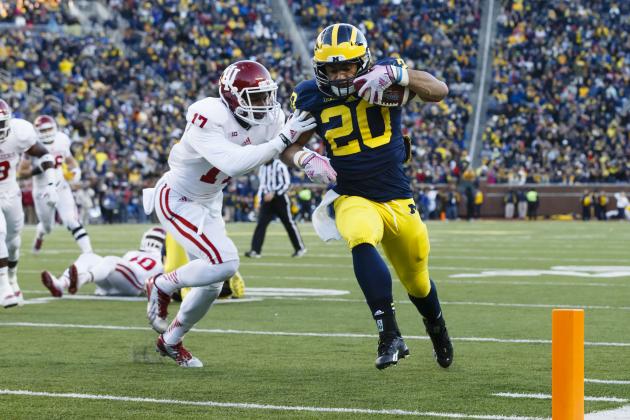Why Drake Johnson is susceptible to ACL tears
So, I was bored this afternoon and decided to watch some games from last year and I made an observation, which some of you may be interested in, others maybe not. But, Drake Johnson has obviously torn his ACL twice and I think I know why.
Before I get into why Drake’s susceptible lets do a quick anatomy lesson. Your ACL attaches to your femur (upper leg) and tibia (lower leg) and is one of the major ligaments (attaches bone to bone) that cross your knee. Its role is to prevent your tibia from rotating independently of your femur. To illustrate, cross your right middle finger over your index finger. This is a model of how your ACL crosses over your knee joint. Next wrap your left hand around your crossed fingers and externally rotate your right hand. You’ll notice this force tightens your fingers. If instead you internally rotate your right hand, your fingers loosen and come apart. The former is a stable position for your knee, the latter an unstable one. When your feet are pointed straight ahead of your body/torso and your knees are slightly outside of your feet you are creating a stable ACL. When your feet open up it becomes difficult to track your knee outside unless your have incredible glute control and your tend to internally rotate or collapse your knee, collapse at the ankle, and lose the arch in your foot.
It looks like Drake wears ankle supports, which is a possible indication that he’s been doing this for some time. The arch you won’t see in a fully padded football player wearing cleats, but the knee you certainly can. I believe this latter foot/knee position is exactly what I see Drake doing and why he is susceptible to ACL tears and he’s allowing his feet to externally rotate which is driving his knee inward and losing torque at his knee joint and making his ACL susceptible when under high speeds/loads. But, this all starts by losing force through the hips. Here’s a few pictures that illustrates what I mean.
Notice the knee internally rotated and inside the foot and the ankle collapsing

Again here, foot externally rotated and knee internally rotated.

Again, same thing

Drake uses this strategy over and over. The vast majority of the time it is not an issue as he's obviously a high level athlete and a very strong guy. However, when he uses this strategy under high loads or speeds the ACL becomes more susceptible and eventually as his past has show will tear under the pressure. If he can learn the maintain torque through the hip, knee, ankle, and foot by pointing his toes straight ahead of him, not allowing his arch to collapse, and tracking his knee over or slightly outside of his foot, the will greatly reduce the chances of this happening.
Is this really a "strategy" as you term it or is it just the way he runs? Under the sudden pressure of avoiding a tackler or making someone miss he may just revert to the way he has always moved. I imagine you can train yourself to run differently but it seems to me that's something that can take a while ( ~year?) to change.
To me, it's probably just the way he runs. He's a toe-out runner. The running backs I coach, I try to get them to run "in-line." That is, feet straight ahead and their arms pumping straight back and straight forward. Some guys run their arms side to side and run with their feet out... and you can try to coach them differently but they will always revert to that comfort zone.
Can someone email this to Drake...seriously
They are working on loosening Drakes Hips this off-season in hopes of avoiding another ACL injury.
I was told Drake Johnson has some of the tightest hips the S&C staff have ever worked with.
Take it for what it's worth.
Drake was hurt against CMU when he was side-swiped on kickoff and just fell "wrong". It had nothing to do with stride, rotation, all that jazz.
Drake had surgery
Drake went about 15 months and then re-injured what would still probably be not a 100% strong/healed reconstruction.
While there are a myriad of pre-conditions that lend themselves to ACL injuries, most is just plain ol' crappy luch mechanically in a certain situation.
Is Drake coming back then??